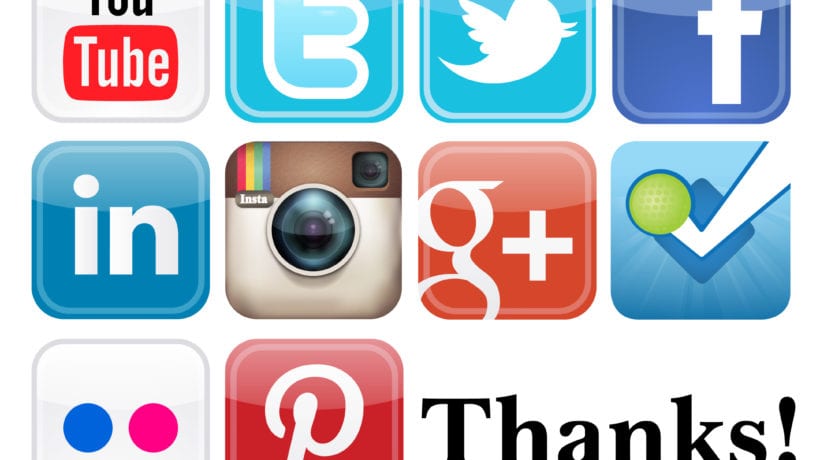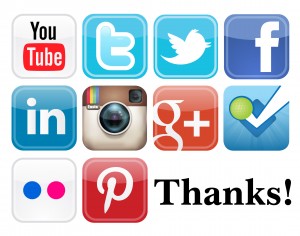Social media has been cutting out a larger and larger piece of our personal lives for the better part of the last 15 years (anyone else start out on Myspace like me?). It has continued to evolve and the juggernauts have even become publicly traded companies now (Facebook, Twitter, LinkedIn). What I have been particularly interested in as someone in marketing, is how has it come along specifically for businesses. Let’s take a look at social media’s five most popular platforms and how they are currently being utilized by businesses.
To set this up properly, we must acknowledge that the uses of social media are distinctly different between business-to-business brands and business-to-consumer brands. That being said, I will offer the uses of each category where appropriate across the different social networks.
B2B Uses: Primarily used to push content. White papers, press releases, news articles all found in a convenient timeline with the most recent at the top. Secondarily, Facebook is used to humanize these brands that are often very buttoned-up. You will see photos of employees engaged in community service, company picnics and often a peek into the work environment.
B2C Uses: With virtually every money spending human and their demographic information on Facebook, over 1.3 BILLION users, both the site and brands are using it to raise revenue. Facebook with ads and boosted posts, and the brands by throwing advertisements and specials directly into their target consumer’s personal timeline. In addition, it is a place for product reviews and even customer service interaction.
In both instances, Twitter is the go-to for real-time interaction. News regularly breaks on the site now because it offers a quick platform to launch the scoop and is informal enough that there often isn’t punishment for inaccuracies. This site is a great platform to be conversational. Also the use of hashtags makes it easy to get in front of the right audiences. The negative of Twitter is how much of a burden it becomes during any already stressful PR nightmare.
B2B Uses: Twitter has become a great avenue to live tweet happenings from trade shows and events as well as companies to engage one another and industry experts.
B2C Uses: Real-time product announcements and customer service make twitter great for brands. It lets consumers feel directly connected to the brand (for better or for worse at times). Similar to Facebook, Twitter also has a paid advertising model to help boost awareness of brands.
LinkedIn is the only work-specific social media. It is a live resume. Being such, it is a great place to share your professional content (blogs, projects, portfolio). Its #1 use for businesses is connecting employers with potential employees and sales people with prospects. LinkedIn makes its revenue through its premium membership option which options advanced features for job-seekers, employers and sales professionals.
Where LinkedIn is vast majority B2B, Instagram is majority B2C. As a photo/caption only platform, it is great to offer product photos, ads and information in a quick scroll-through timeline. As a consumer I enjoy following brands I like on Instagram and often take advantage of their advertised deals. With no cost to advertise as a business, it only is a matter of taking the time to quickly put some photos out and drive easy ROI.
YouTube
Video seems to be a challenging platform still for many businesses. Video production and editing can be more trouble than it is worth in a lot of instances. Still, it has a niche that certain businesses are capitalizing on.
B2B Uses: Vlogs, product demonstrations, interviews, live-streams
B2C Uses: Commercials, some consumer engagement, event recaps
Just three years ago I think the marketing industry was curious to see how social media and business would fit together. The lack of directly measurable ROI (at the time) and sheer number of different social media sites had companies in a wait and see position. Since then, the cream has risen as far as which sites are worthwhile, and the above shows their specific fit.
When dealing with my clients and prospective clients, social media has provided a great way to get a better feel for the company and its culture. How do you find social media to be relevant to your marketing mix?
Author: Chase Howells
Your feedback is greatly appreciated on this post. Please contact me using the links below:

 Social media has been cutting out a larger and larger piece of our personal lives for the better part of the last 15 years (anyone else start out on Myspace like me?). It has continued to evolve and the juggernauts have even become publicly traded companies now (Facebook, Twitter, LinkedIn). What I have been particularly interested in as someone in marketing, is how has it come along specifically for businesses. Let’s take a look at social media’s five most popular platforms and how they are currently being utilized by businesses.
Social media has been cutting out a larger and larger piece of our personal lives for the better part of the last 15 years (anyone else start out on Myspace like me?). It has continued to evolve and the juggernauts have even become publicly traded companies now (Facebook, Twitter, LinkedIn). What I have been particularly interested in as someone in marketing, is how has it come along specifically for businesses. Let’s take a look at social media’s five most popular platforms and how they are currently being utilized by businesses.